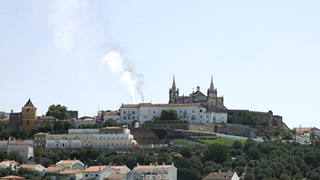Military Defense Line – Alto Alentejo
The northern Alentejo, Portalegre in the district are the towns and city with a military heritage belonging to Line:
Alter do Chão
Alter do Chao is the Alter do Chão Castle, in the town center, this was sent rise by Pedro I in 1359, is currently owned by the House of Bragança Foundation. Its medieval about it dates back to the year of construction of the castle, but was never completed. This fence begins at Donjon or in front of the wall to the Largo of the Twelve Best Alter. The Alter do Chão Castle was considered as a temporary residence for the kings of the dynasty of Braganza, always used when their displacement. Throughout the twentieth century, the history of this castle and its book value were forgotten. This was a real inn and commander’s residence, a blacksmith shop, a carpentry workshop, a barn, a stable, a mill of Olive and even a trash can, despite the National Monument rating, awarded in 1910..
Regarding the Watchtower, this is in the castle structure with a very high silhouette, visible as soon as one reaches the village. The access is made by ogival door in the quota of the second floor of the former commander’s residence, directly linked to a room to the west. The internal staircase reaches a second room and the top of the tower, this is constituted by a notched indented platform. To the north there is another tower with smaller dimensions and achievable through the second floor of the commander’s residence. Domestically, this tower has a large patio, where stands the square edge of a well and further into the background is the rest of the former commander’s residence, modified to meet the needs of the castle occupants.
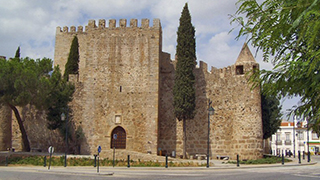
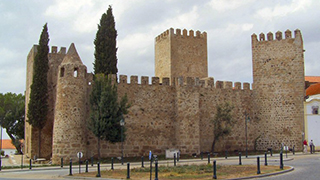
Arronches
In 1977, Arronches Castle was considered Public Interest. In the second century BC and the first century BC, Arronches was occupied by the Romans, and later conquered by the Moors and then by D. Afonso Henriques. The development of this village took place only after the construction of fortification walls. Over the years, centuries, this fort had interventions to drawing level architectural and improvement works to the present day, and in 1998 held an archaeological intervention near the wall, to the development of the ancient village connection zone housing expansion in this and in 2000 had its last archaeological intervention for landscaping.
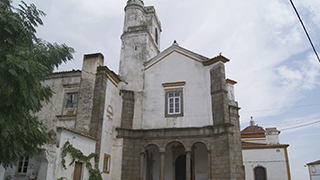
Avis
Avis Castle is strongly related to Portuguese history, as the Master of Avis, King João I, lived in this. This fortification was built around the year 1214, during the reign of Alfonso II, the members of the order, which later renamed would Avis Order and whose Master ascended to the throne of Portugal in 1385. After the extinction the religious orders in Portugal in 1834, various elements of the Order of Avis were lost and consequently the same happened to Avis Castle. What remains fortification it is classified as a National Monument.
Legend has it that some monks sought an ideal place to build a fortress, and on the hill in front of the Muslim domain territory, saw two eagles hotels on a cork oak. This event was regarded as a sign for the construction of his castle, this place called Avis, Latin for bird. The Eagles have become a symbol of the Order of Avis. The story also reveals that this castle was built in secret, at night and during the day had been hidden by tree branches. This legend explains the relationship of the Order of Avis with this castle.
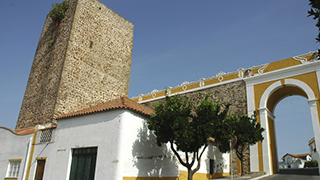
Castelo de Vide
A village that saw its ground to lift and destroy medieval fortifications along the thirteenth century, according to the manorial interests, which went against the interests of the crown and elsewhere, would rather have you as a distant king. Thus, Dinis built the castle, completed in the reign of his son Afonso IV in 1327. Thus, the village life began to Castelo de Vide. This castle is in the south corner of the medieval fortifications, which contains the primitive village, thus forming the walls that surround the village and in which part of the Donjon. After several interventions and reconstruction works of this tower, it is protected as a National Monument since 1910.
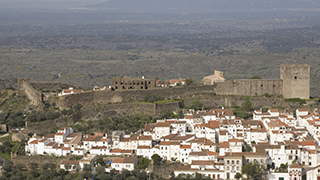
Campo Maior
The Campo Maior Castle and the Mother Church with its macabre Chapel of Bones report a strong history of defense against sneak attacks. The Chapel of Bones was later built a large explosion of powder magazine of the castle keep.
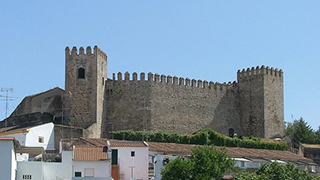
Elvas
The Elvas Castle was aimed at the defense and protection of the kingdom of Portugal, from the reign of King Sancho II. This castle has bases Muslim structure, this was won in 1166 and 1220 and only in 1226 was it rebuilt, concluding his work in 1228. Over the centuries and reigns, there were various works of improvement and increased its function to residence. In the mid-seventeenth century, Elvas Castle happens to be one of the most remarkable abaluartados sets of Europe, because of the need to defend against the border wars between 1641e 1668. With these changes and reedificações the Elvas Castle continues to have its medieval military structure and is recognized as one of the most important monuments of overlapping functions and strategic-military development, throughout the history of Portugal.
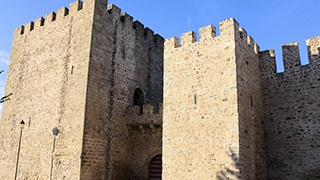
Marvão
The Marvão Castle was erected as a detention fortification, oriented to the border with Spain. This was also an effective refuge and a great vantage point and surveillance, since it was one of the most important points of penetration of enemy armies. One of the most rockers castles at national level, the Marvao Castle has two adjoining enclosures, which for reasons of improving the defensive lines, they had to cover the higher rocky ridge. Over time, this fortification has been developing and evolving, employing new war technologies – thus became a bastion fortification, which reinforced the entries in the urban fence, since the radon doors, doors of the Village and the Torrejao Postigo. The Tower of Toll worked as Customs Marvão, thousands of people passed through this in order to seek a better life, visiting friends and family. One of the most intense moments in its history was when the Jews were expelled from Portugal.
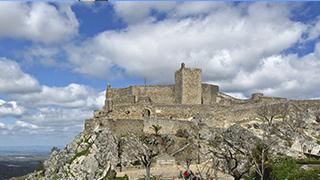
Nisa
Nisa has a very ancient history, this quiet village is sought for its valuable heritage. Since its castle in ruins of the thirteenth century, the Village Gate, the Mother Church of the fifteenth century and Mercy of the sixteenth century, with its Museum of Sacred Art, the Chapels of the seventeenth century Calvary and Our Lady of Joy of or even the sixteenth century Anta S. Gens, which is composed of a set of 4 megalithic elements.
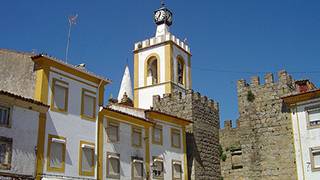
Portalegre
The Portalegre Castle is a fortification built over eight centuries, a highest point of the village. This castle dates back to the thirteenth century, however, was King Dinis who performed the greatest works of fortification. These works include the extension of Castle Street, which re-established the connection between the courtyard of weapons to keep. Currently, the Castle and the main tower dominate the city and are flyable, on the ground floor of the castle is the reception on the first floor is the Temporary Exhibition Gallery and the top floor is the restaurant “The Castle”. On the first floor is a wall of passage to keep.
